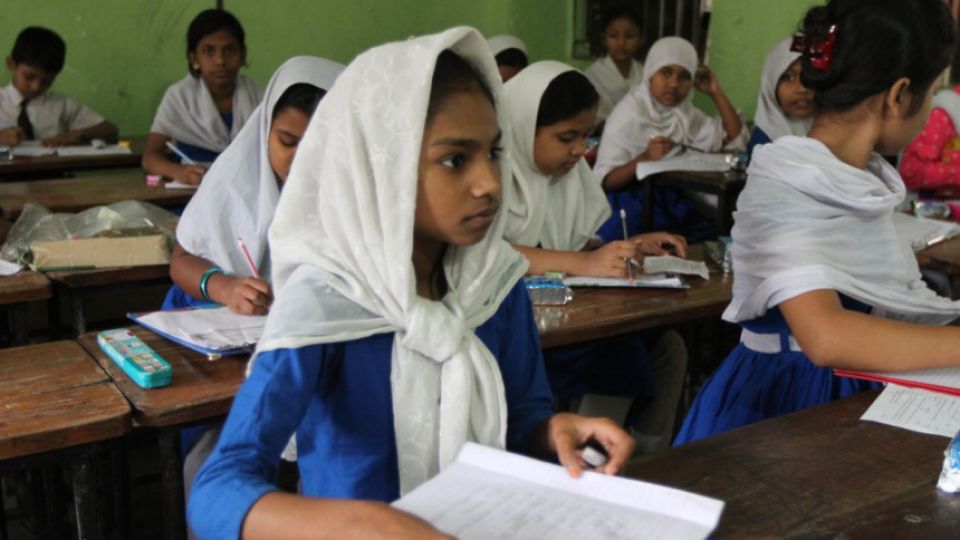August 17, 2022
DHAKA – While the Covid-19 pandemic took a toll on almost every sphere of life, one of the heaviest blows was to female secondary school students in the country.
According to a government report, nearly 50,000 female students fell prey to child marriage, while almost 80,000 of them became child labourers in 2021.
The report was prepared by the Directorate of Secondary and Higher Education, based on information provided by 11,769 secondary schools – almost half of all such schools in the country.
This shows how grim the picture may be if all schools across the country are counted.
In 2021, there were 20,960 secondary schools in the country, according to the Bangladesh Bureau of Educational Information and Statistics.
Experts and academics have said the rate of child marriage in Bangladesh is one of the highest in the world, and the pandemic aggravated the situation.
Prof Amir Hossain, director of monitoring and evaluation wing of DSHE, said they prepared the report as there were fears among many that large number of students had dropped out and became victims of child marriage and child labour.
“So we wanted to know the ground situation.”
Educational institutions were shut down from March 17, 2020, after the pandemic hit the country earlier that month. They resumed partially on September 12, 2021, after one of the longest school closures — 543 days — in the world.
After resumption, school authorities held final exams for students of classes six to nine on three subjects, while 10th graders had to sit for Bangla, English and math exams.
The monitoring and evaluation wing of the DSHE collected information on how many of those students did not partake in the exams.
The report said that out of 66,49,538 students of 11,769 schools, 4,81,055 were absent for the tests. Of them, 47,414 were victims of child marriage and 77,706 became child labourers.
Amir Hossain said, “It isn’t that all the absentees have dropped out of school. Some may have migrated to other places, while many have had to join work to help their families. Many will come back to school.”
In Rajshahi, the highest number of schoolgirls – 10,317 – were married off, followed by 8,064 in Khulna, and 7,425 in Rangpur, the report said.
In Barishal, the number of child marriage victims was 1,514, 2,035 in Chattogram, 4,755 in Cumilla, 5,255 in Dhaka, 5,803 in Mymensing, and 1,228 in Sylhet.
In terms of child labourers, Rajshahi again had the highest number – 12,261 – followed by 11,546 in Mymensing and 10,985 in Dhaka.
Meanwhile, 3,781 students fell victim to child labour in Barishal, 7,472 in Chattogram, 8,479 in Cumilla, 8,367 in Khulna, 9,685 in Rangpur and 5,030 of Sylhet.
According to Amir, the DSHE report, which will be sent to the education ministry soon, recommends that the government arrange stipends for such students to help them come back to school.
Another study conducted by the Manusher Jonno Foundation also found the rate of child marriage and child labour both increased during the pandemic.
It found that between April and October 2020, at least 13,886 girls aged between 10 and 17 were forced to marry, while 8,140 children were sent to work.
In March 2021, Unicef published a report “COVID-19: A Threat to Progress against Child Marriage”, which warned that school closures, economic stress, service disruptions, pregnancy, and parental deaths due to the pandemic are putting the most vulnerable girls at increased risk of child marriage.
Tomoo Hozumi, Unicef representative in Bangladesh at the time, had said, “Despite significant progress in recent years, Bangladesh has the fourth highest prevalence of child marriage in the world.
“Covid-19 compounds the difficulties facing millions of girls. School closures, isolation from friends and support networks, and rising poverty place girls at heightened risk of child marriage.”
According to Unicef’s October 2020 factsheet, 51 percent of young women in Bangladesh were married off before their 18th birthday.


